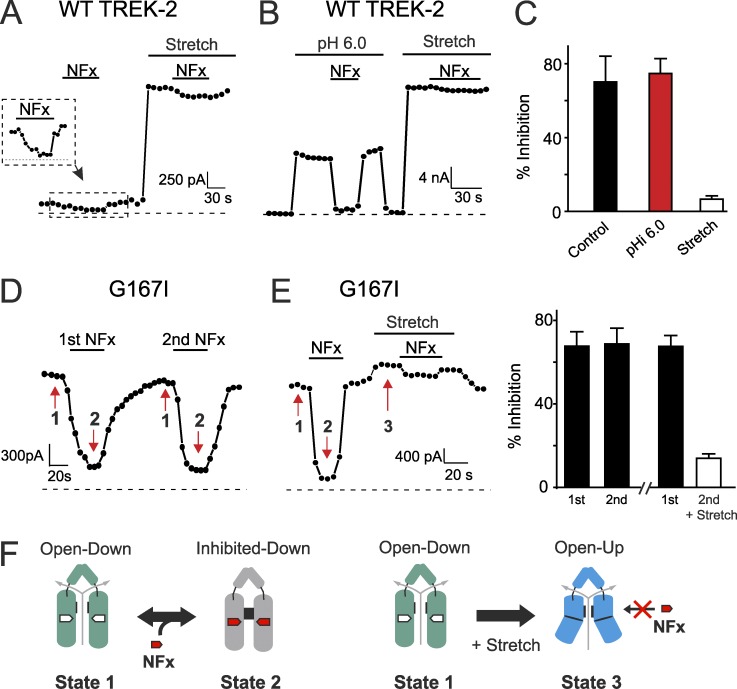Figure 2.
Dynamic interconversion between structurally distinct open conformations. (A) Example showing WT TREK-2 currents from an inside-out patch; at pHi 7.4, channels can be inhibited by 10 µM NFx (effect magnified within inset dashed box). Channels were then stretch activated by application of negative pressure (−11 mmHg suction to the pipette), whereupon NFx inhibition is markedly reduced. Currents were recorded from voltage steps to 0 mV from a holding potential of −80 mV. The dashed line indicates the zero current level. (B) Similar dynamic changes in NFx inhibition can also be observed for channels activated by intracellular acidification (pHi 6.0), demonstrating that these two activated states are structurally distinct. (C) Summary of dynamic changes in NFx inhibition seen for stretch activation but not pHi activation. (D) Repeated NFx application produces consistent inhibition of the G167I mutant channel. The red arrows indicate distinct structural states of the channel. (E) Example experiment (similar to that shown in A and B) showing a dynamic change in NFx inhibition for the G167I mutant as the channel is converted from the down state to the up by membrane stretch. (C and E) Error bars shown are mean ± SEM (n ≥ 6). (F) Cartoon illustrating conversion between different structural states of the channel. The numbers refer to states shown by the red arrows in D. (left) The G167I mutation directly activates the filter gate in the down state, and the NFx-binding site remains available, but when the same channel is subjected to membrane stretch (right), it is converted into the up state, which exhibits reduced NFx sensitivity as the result of closure of the fenestration binding site.

